
The John Newbery Medal, frequently shortened to the Newbery, is a literary award given by the Association for Library Service to Children (ALSC), a division of the American Library Association (ALA), to the author of "the most distinguished contributions to American literature for children". The Newbery and the Caldecott Medal are considered the two most prestigious awards for children's literature in the United States. Books selected are widely carried by bookstores and libraries, the authors are interviewed on television, and master's theses and doctoral dissertations are written on them. Named for John Newbery, an 18th-century English publisher of juvenile books, the winner of the Newbery is selected at the ALA's Midwinter Conference by a fifteen-person committee. The Newbery was proposed by Frederic G. Melcher in 1921, making it the first children's book award in the world. The physical bronze medal was designed by Rene Paul Chambellan and is given to the winning author at the next ALA annual conference. Since its founding there have been several changes to the composition of the selection committee, while the physical medal remains the same.
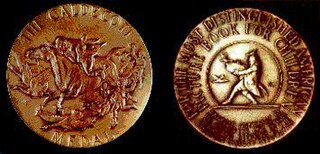
The Randolph Caldecott Medal, frequently shortened to just the Caldecott, annually recognizes the preceding year's "most distinguished American picture book for children". It is awarded to the illustrator by the Association for Library Service to Children (ALSC), a division of the American Library Association (ALA). The Caldecott and Newbery Medals are considered the most prestigious American children's book awards. Beside the Caldecott Medal, the committee awards a variable number of citations to runners-up they deem worthy, called the Caldecott Honor or Caldecott Honor Books.
Verna Norberg Aardema Vugteveen, best known by the name Verna Aardema, was an American writer of children's books.
Leo Dillon and Diane Dillon were American illustrators of children's books and adult paperback book and magazine covers. One obituary of Leo called the work of the husband-and-wife team "a seamless amalgam of both their hands". In more than 50 years, they created more than 100 speculative fiction book and magazine covers together as well as much interior artwork. Essentially all of their work in that field was joint.
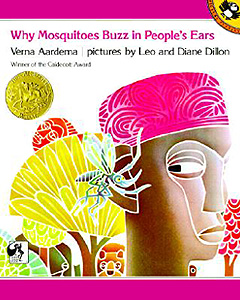
Why Mosquitoes Buzz in People's Ears: A West African Tale is a 1975 children's picture book by Verna Aardema and illustrated by Leo and Diane Dillon. Published in hardcover by Dial Books for Young Readers, an imprint of Penguin Random House, it is told in the form of a cumulative tale written for young children, which tells an African legend.
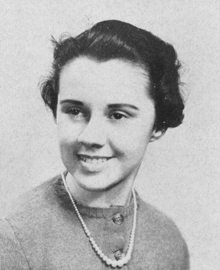
Marcia Joan Brown was an American writer and illustrator of more than 30 children's books. She has won three annual Caldecott Medals from the American Library Association, and six Caldecott Medal honors as an illustrator, recognizing the year's best U.S. picture book illustration, and the ALA's Laura Ingalls Wilder Medal in 1992 for her career contribution to children's literature. This total of nine books with awards and honors is more than any other Caldecott-nominated illustrator. Many of her titles have been published in translation, including Afrikaans, German, Japanese, Spanish and Xhosa-Bantu editions. Brown is known as one of the most honored illustrators in children's literature.
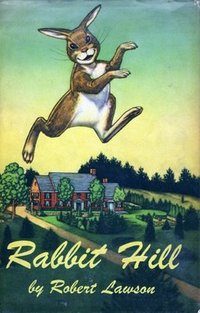
Rabbit Hill is a children's novel by Robert Lawson that won the Newbery Medal for excellence in American children's literature in 1945. In 1954 he wrote a sequel, The Tough Winter.
Gerald McDermott was an American filmmaker, creator of children's picture books, and expert on mythology. His creative works typically combine bright colors and styles with ancient imagery. His picture books feature folktales and cultures from all around the world.

A Tree is Nice is a children's picture book written by Janice May Udry and illustrated by Marc Simont. It was published by Harper and Brothers in 1956, and won the Caldecott Medal in 1957. The book tells Udry's poetic opinion on why trees are nice:
"Trees are pretty. They fill up the sky. If you have a tree, you can climb up its trunk, roll in its leaves, or hang a swing from one of its limbs. Cows and babies can nap in the shade of a tree. Birds can make nests in the branches. A tree is good to have around. A tree is nice."
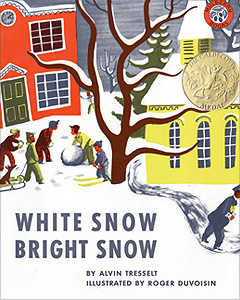
White Snow, Bright Snow is a 1947 book written by Alvin Tresselt and illustrated by Roger Duvoisin. Released by Lothrop Publishers, it was the recipient of the Caldecott Medal for illustration in 1948.
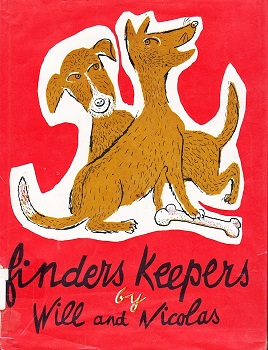
Finders Keepers is a book written by William Lipkind and illustrated by Nicholas Mordvinoff. Released by Harcourt, it was the recipient of the Caldecott Medal for illustration in 1952.

A Story, a Story is a children's picture book written and illustrated by Gail E. Haley that retells the African tale of how the trickster Anansi obtained stories from the Sky God to give to the children of the earth. The book was produced after Gail E. Haley spent a year in the Caribbean researching the African roots of many Caribbean tales. Released by Atheneum, it was the recipient of the Caldecott Medal for illustration in 1971.
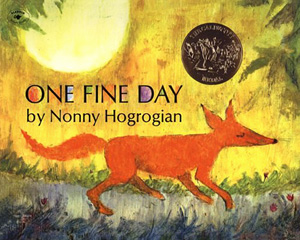
One Fine Day is a children's picture book by Nonny Hogrogian. Released by Macmillan, it was the recipient of the Caldecott Medal for illustration in 1972. The story is a retelling of an Armenian folktale.
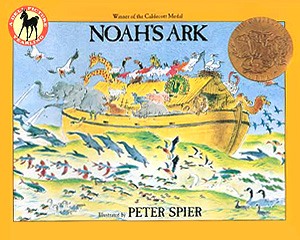
Noah's Ark is a children's picture book written and illustrated by Peter Spier, first published by Doubleday in 1977. The text includes Spier's translation of "The Flood" by Jacobus Revius, a 17th-century poem telling the Bible story of Noah's Ark. According to Kirkus Reviews, the poem comprises sixty three-syllable lines such as "Pair by pair". "Without revising or even enlarging on the old story, Spier fills it in, delightfully." In a retrospective essay about the Caldecott Medal-winning books from 1976 to 1985, Barbara Bader described the book as "at once elaborate and feeble" and Revius' poem as "neither particularly suited to children nor eloquent in itself."
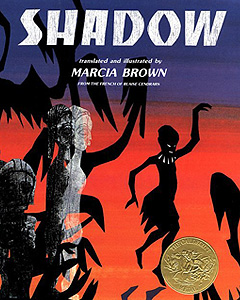
Shadow is a children's picture book created by Marcia Brown and published by Scribner in 1982. The text is Brown's translation of the poem La Féticheuse by French writer Blaise Cendrars.
The New York Review Books Children's Collection is a series of children's books released under the publishing imprint New York Review Books. The series was founded in 2003 to reintroduce some of the many children's books that have fallen out of print, or simply out of mainstream attention. The series includes more than 80 titles, ranging from picture books to young adult novels. Often reissued with new introductions, writers such as Michael Chabon, Neil Gaiman, and Philip Pullman have all introduced titles in this series.

The Lion & the Mouse is a 2009 nearly wordless picture book illustrated by Jerry Pinkney. This book, published by Little, Brown and Company, tells Aesop's fable of The Lion and the Mouse. In the story, a mouse's life is a spared by a lion. Later, after the lion is trapped, the mouse is able to set the lion free. Adapting the fable, with the moral that the weak can help the strong, as a wordless picture book was seen as a successful way of overcoming the brief plot generally found in the source stories. While it was Pinkney's first wordless picture book, it was not the first time he had told the story, having previously included it in his Aesop's Fables, published in 2000. Pinkney, who had received five Caldecott Honors, became the first African American to win the Caldecott Medal for his illustrations in this book. His illustrations were generally praised for their realism and sense of place. The cover illustrations, featuring the title characters but no text, drew particular praise.

Atha Tehon Thiras, professionally credited as Atha Tehon, was the daughter and second child of Dr. Leo Roy Tehon and Mrs. Leo Tehon, of Illinois.
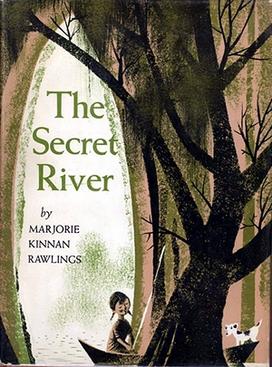
The Secret River is a children's fantasy novel by Marjorie Kinnan Rawlings, author of The Yearling. Published in 1955, The Secret River received a Newbery Honor Award. The first edition, illustrated by Caldecott Medal winner Leonard Weisgard, was issued after Rawlings' death. The book was revised and reissued in 2009 with illustrations by Caldecott Medalists Leo and Diane Dillon. The new edition received an international children's book design award in 2012. The Secret River is the only book Rawlings wrote specifically for children. The story of young Calpurnia, who goes on a quest to find a magical river and catch fish for her starving family and friends, it has two themes common in Rawlings' writing, the magic of childhood and the struggle of people to survive in a harsh environment.

Radiant Child: The Story of Young Artist Jean-Michel Basquiat is a 2016 picture book biography by Javaka Steptoe about Jean-Michel Basquiat. Using a style similar to Basquiat's, the book tells the story of his childhood and early career. It won the 2017 Caldecott Medal and Coretta Scott King Illustrator Award for its illustrations.
















